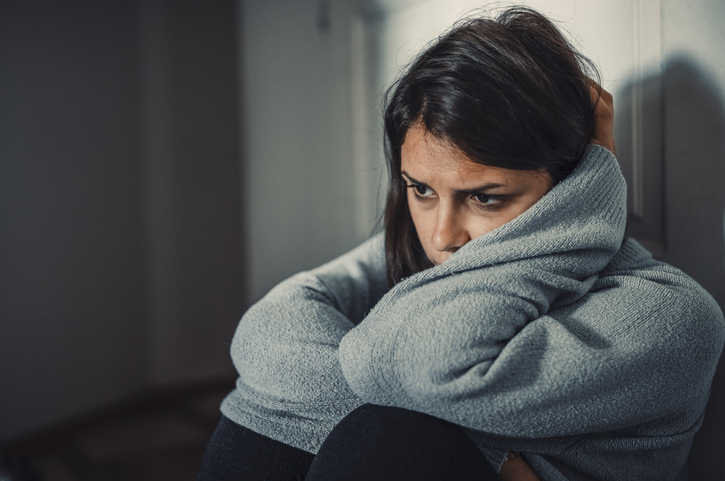Seasonal Affective Disorder: What Is SAD and How to Treat It
The winter months can be a time of family and festivities, but it can also be an emotional time when we feel stress, sadness and fatigue. We tend to spend more time indoors and get less exposure to sunlight, and we are more prone to sickness in the wintertime. The longer hours of darkness can contribute to some people feeling sad or depressed during the colder months. According to a depression rate study published Dec. 5, 2023, by the United Health Foundation, Tennessee had the highest prevalence of depression of the 50 U.S. states. Approximately 29 percent of Tennesseans reported a depressive disorder diagnosis compared to the national average of 22 percent.
What is SAD (Seasonal Affective Disorder)?
Seasonal affective disorder (SAD) is a type of depression that happens during certain seasons of the year when there is less sunlight. Shorter days and less exposure to daylight may set off a chemical change in the brain leading to symptoms of depression.
Seasonal affective disorder typically reaches peak search popularity in November, with another spike in early January when “winter blues” settle in once more. SAD is not to be confused with “holiday blues,” which describe feelings associated with loss or societal pressures and expectations during the holidays, rather than depression linked to fewer hours of sunlight. Patrick Jensen, MD, board-certified psychiatrist at Covenant Health, says, “SAD is a common phenomenon that is not always talked about. It is a poorly understood disorder that remains at the intersection of how our mood responds to light.”
How Do I Know If I Have SAD?
Symptoms of SAD or seasonal depression can include increased sleep and daytime drowsiness, social withdrawal, grouchiness and loss of interest in formerly enjoyable activities.
SAD may be diagnosed after a mental health screening where a provider may ask questions about your health history and lifestyle, including your typical mood, stressors and coping mechanisms. These screenings are done by a psychiatrist or other mental health professional. Depression is most often treated with light therapy, psychotherapy and, in some cases, antidepressants. Always consult a medical professional for a diagnosis.

What are the Signs and Symptoms of SAD?
- Increased sleep and daytime drowsiness
- Loss of interest and pleasure in activities formerly enjoyed
- Social withdrawal and increased sensitivity to rejection
- Grouchiness and anxiety
- Feelings of guilt and hopelessness
- Excessive tiredness (fatigue)
- Decreased libido
- Decreased ability to focus
- Trouble thinking clearly
- Increased appetite, especially for sweets and carbohydrates
- Weight gain
- Physical problems such as headaches
- Symptoms tend to come back and then improve at about the same times every year
What Causes Seasonal Affective Disorder?
There is no clear cause of SAD, but less sunlight and shorter days may be part of the cause. Melatonin, a sleep-related hormone, also may be linked to SAD.
SAD often starts during adulthood after the age of 20. The risk of SAD increases with age, and women are affected more often than men.
How to Treat Seasonal Depression or SAD
Dr. Jensen reports, “We have good data to suggest that light therapy is effective in treating SAD. Bright white or blue light at [a rating of] 10,000 lux for 30 minutes a day can effectively treat SAD during those crucial winter months. The key is that the light must be in tangential proximity to the eye, as it is the light’s interaction with the retina and subsequent chemical cascade that treats SAD.”
To determine whether you may be experiencing depression, Dr. Jensen says being honest with ourselves is the first step in treatment.
“One must first have insight and be aware that he or she is suffering from SAD,” explains Dr. Jensen. “Then, I would recommend light therapy, which does not need a prescription. You can purchase a light box from many sources. If SAD persists despite treatment, I recommend seeing a mental health provider for either medication or psychotherapy treatment. Some coping mechanisms include exercise and ongoing interaction with loved ones who support you.”
When to See a Doctor About SAD
If you or a loved one is constantly irritable, sad, fatigued, or experiences feelings of hopelessness, contact your primary care physician or a mental health provider.
Seek professional help if you do not respond to light therapy after three to four weeks, if depression interferes with functioning, or if you begin to experience suicidal thoughts. Dr. Jensen also recommends seeking professional help if you or a loved one is attempting to cope with alcohol or illicit drugs.
Peninsula Behavioral Health is a mental health service that can help you manage your stress, or feelings of anxiety and depression.
For help scheduling an appointment, contact us online or call 865-970-9800

Covenant Health
Headquartered in Knoxville, Tennessee, Covenant Health is a community-owned, healthcare enterprise committed to providing the right care at the right time and place. Covenant Health is the area’s largest employer and has more than 11,000 compassionate caregivers, expert clinicians, and dedicated employees and volunteers.
